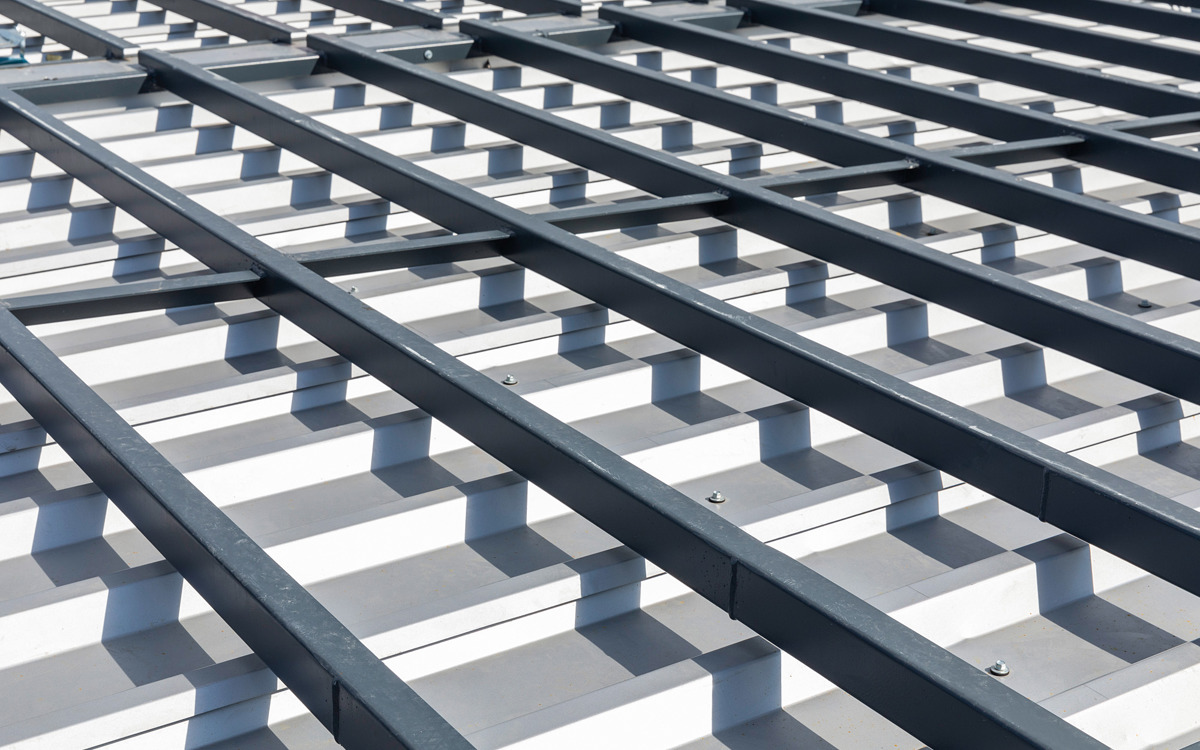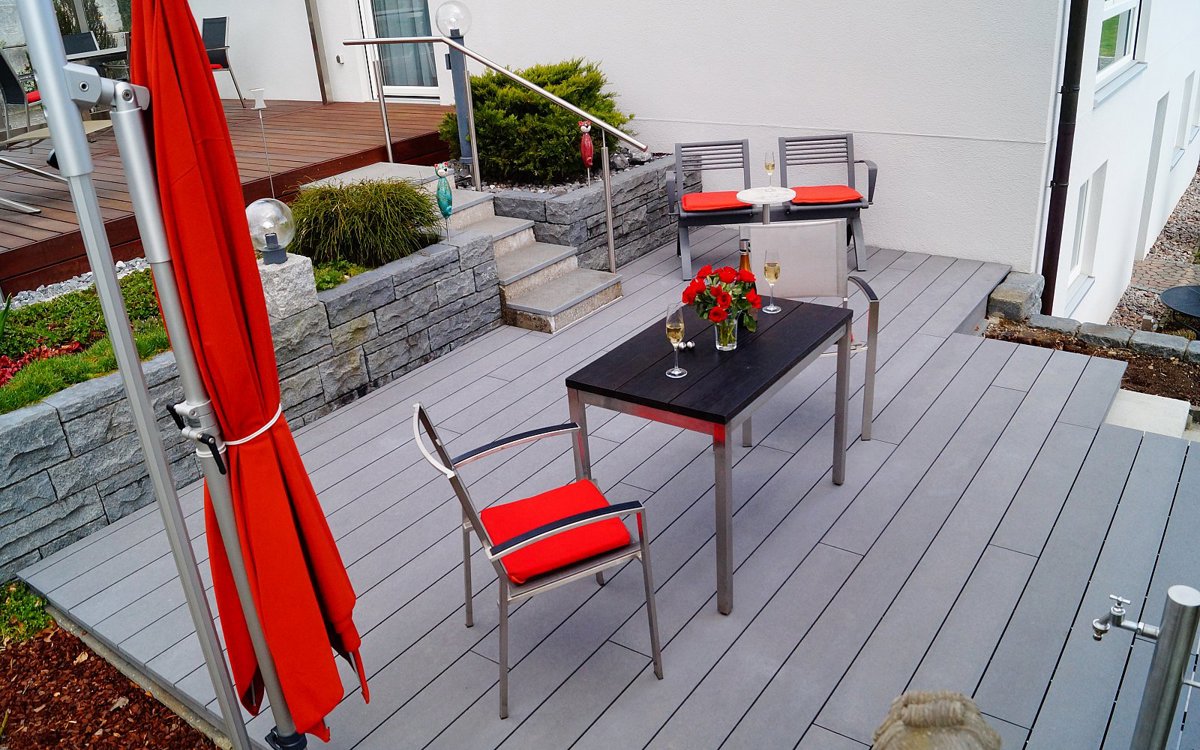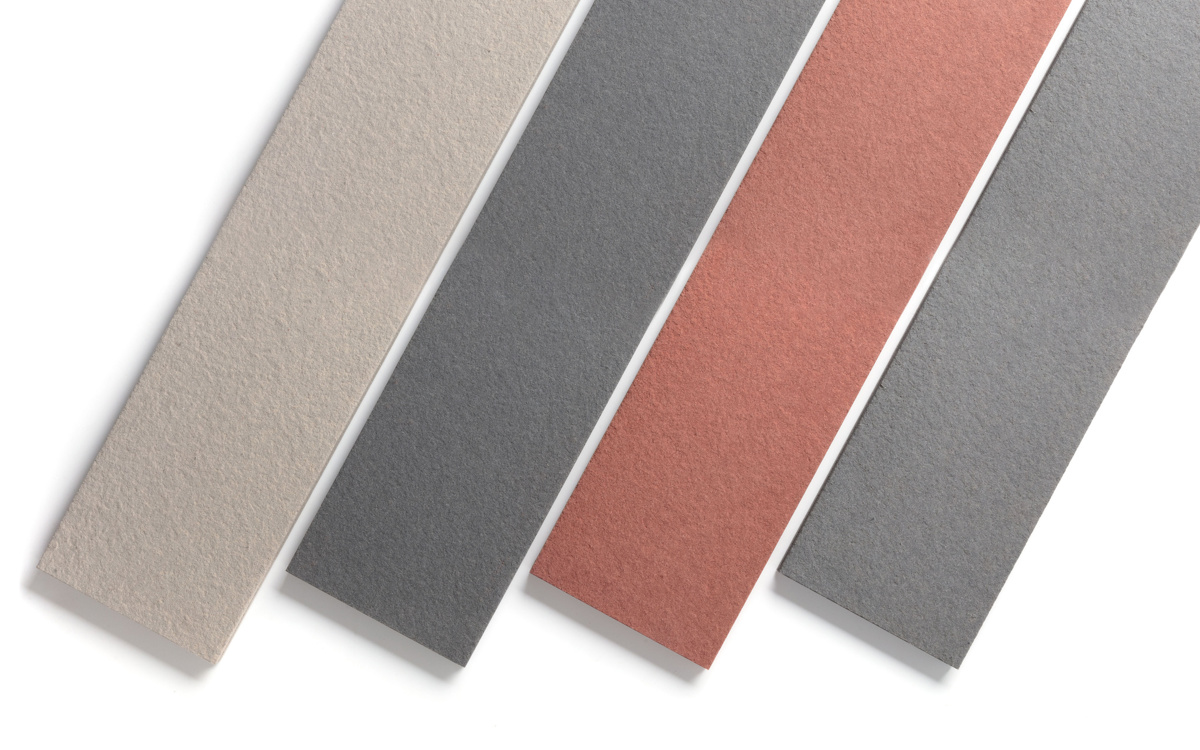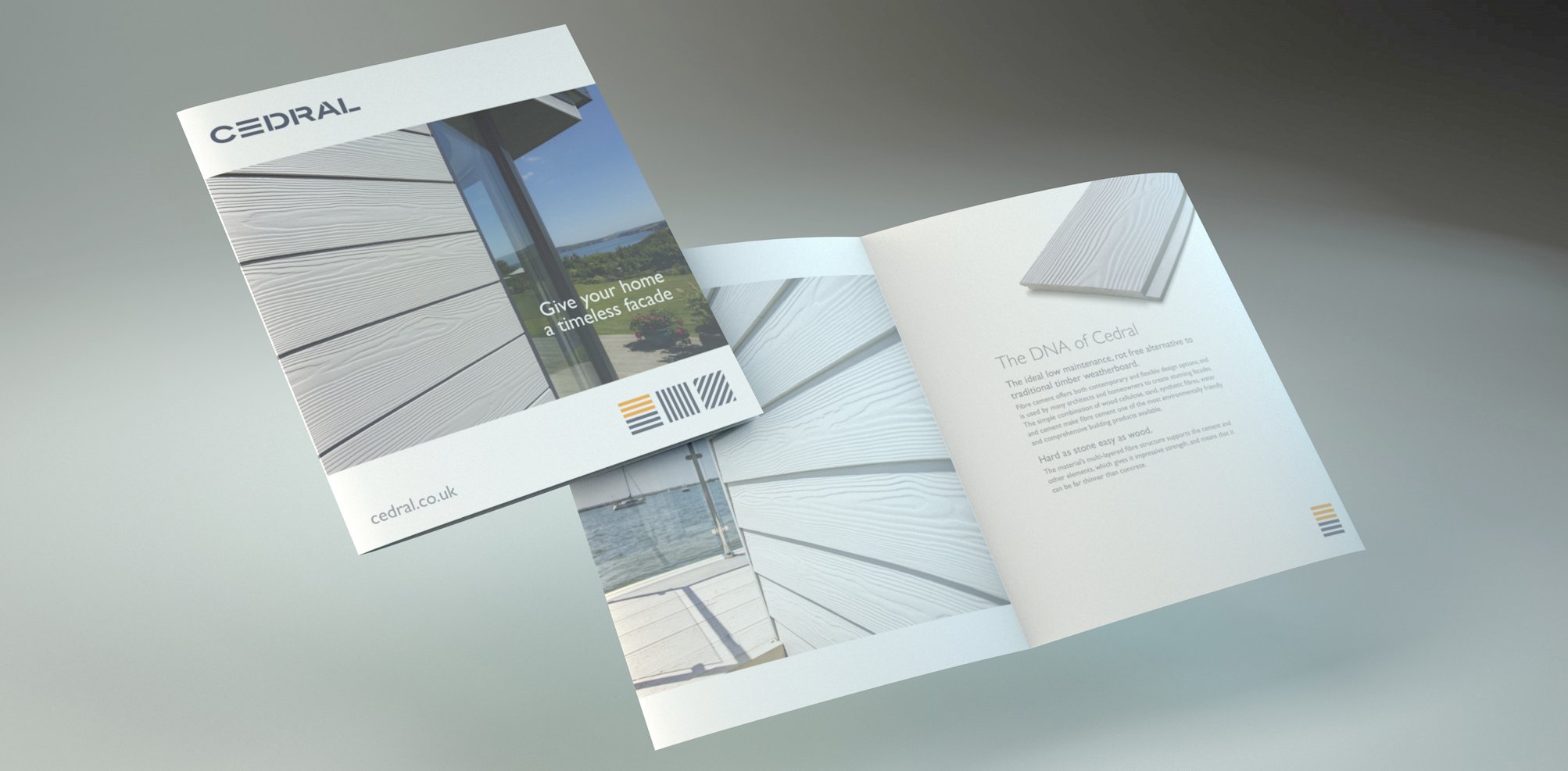Not all gardens are nice and flat. When you are living in a hilly area, chances are that your lot is also sloped. So how do you install a terrace despite an uneven terrain? We show you different possibilities to create a cosy outdoor living space with quality material.

The challenges of a terrace on uneven surfaces
If you want to install your terrace on a rugged underground, there are two possibilities. You could level part of your garden so that your terrace can be installed smoothly on a flat surface. Or, you can create your terrace above the uneven underground, floating in the air as it were. These options mainly depend on how steep the slope is. If there are only minor differences in elevation, it is easy to level parts of your garden. You can distribute your terrace on several levels that generally follow the slope of your lot. However, if you prefer a terrace on one level, you might need to compensate a lot more height difference. In that case, a solid substructure is required.

Several terraces on different levels
You can embrace the height differences in your garden and create several terraces with different elevations, connected with stairs. This variety of levels gives you the possibility to play with different themes or functions. One of the terraces could serve as an outdoor kitchen area, with your barbecue, work surface, dining table etc. Another level could be your relaxation area, with comfy seats, sun shades, bar etc. And don’t forget a kids’ area, where they can play with their toys and let off steam. It is important to use non-slippery planks if you are building a terrace on different heights. Cedral Terrace’s fibre-cement planks are not only non-slippery, they are also pleasant to the touch, so that kids can sit and roll on the floor. And for you, it is a pleasure to walk barefoot on the ingeniously comfortable Cedral Terrace boards.
- Want to feel this unique texture? Ask your free Cedral Terrace sample today.

One single terrace on one level
If you are not into different terraces on different levels, you can opt for one big terrace. Because of the slope of your garden, your terrace will be partly floating in the air. To make this possible, you need a good substructure to compensate the difference in height.
Most often wood is used to build the supportive structure for a suspended terrace, as it is a versatile material. To determine the appropriate dimensions, you need to calculate the maximum load, depending on the maximum number of people that will be on your terrace at the same time. Seek advice from a specialist if you are not sure.
The wooden substructure should be made of stable wood in appropriate sizes and dimensions. Dig holes in the ground and fix the construction timbers in solid foundations. The distance between the individual foundations depends on the maximum distance between the individual wooden pillars. Also take into account how the drainage will happen.

The advantages of fibre-cement terrace planks
Whether the substructure of your terrace is made of wood or other materials, we recommend fibre-cement terrace boards because they are one of the most durable choices. Thanks to their ingenious composition of cement reinforced with fibres, these terrace planks are ultra-strong and will last you a lifetime.
Cedral Terrace comes in a variety of trendy colours that age beautifully over time. Fibre-cement terrace boards are low-maintenance. They are impervious to rot and mould and don’t need to be painted or treated every few years. When dirty, you can simply wipe them down with soapy water.
Thanks to the special production process, Cedral Terrace feels soft and is non-slippery, even when wet. This makes Cedral Terrace the perfect material for loads of outdoor fun.
